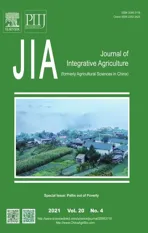Poverty alleviation through e-commerce:Village involvement and demonstration policies in rural China
2021-03-23PENGChaoMABiaoZHANGChen
PENG Chao,MA Biao,ZHANG Chen
1 Administration and Management Institute,Ministry of Agriculture and Rural Affairs,Beijing 102208,P.R.China 2 School of Agricultural Economics and Rural Development,Renmin University of China,Beijing 100872,P.R.China 3 Institute of Population and Labor Economics,Chinese Academy of Social Sciences,Beijing 100006,P.R.China
Abstract The diffusion of e-commerce has played a significant role in recent rural economic development in China. E-commerce is also considered as an efficient channel to alleviate poverty in rural China. Voluminous studies have investigated the contribution of e-commerce to agricultural development,yet it is lacking empirical evidence as to the effects of e-commerce on rural poverty alleviation. Since the year of 2014,in order to develop rural e-commerce,Chinese government launched the National Rural E-commerce Comprehensive Demonstration Project. This gradual involvement policy offered a natural experiment for evaluation of e-commerce. Based on village-level survey data from rural China and Heckit method,our study finds that rural e-commerce has a significantly positive effect on rural income. Moreover,the effect is inverted U-shaped for the relative-poverty villages. The estimation of the propensity scores matching model confirms that the results are robust.The following policy recommendations are proposed:(1) policy support to rural e-commerce should prioritize the povertystricken villages. By doing so,the marginal income effects of e-commerce will be maximized. (2) Investment in internet infrastructure and establishment of human resources for e-commerce in rural areas will have spillover effects,increasing rural income through the “digital dividend”.
Keywords:poverty alleviation,income,National Rural E-commerce Comprehensive Demonstration Project,Heckit method
1.lntroduction
Since 1978,China has lifted more than 700 million people out of poverty. China was the first developing country that achieved the Millennium Development Goal for poverty alleviation set by the United Nations (Liuet al.2019).Although the Chinese government has prioritized policies that target at improving rural residents’ welfare,poverty remains a critical problem with 16.6 million people estimated to live in poverty and an poverty incidence rate of 1.7% in 2018 (NBSC 2019). Poverty alleviation remains a massive task for the Chinese government,which is determined to eradicate absolute poverty by 2020.
Thanks to the development of information technology and increasing use of smartphones in rural areas,e-commerce penetration in the rural economy has been on the rise in recent years. Rural e-commerce is a direct approach to take advantage of information technology and achieve higher profits. It adapts to the requirements of rural industrial transformation and upgrade. By doing so,it provides new drivers for the revitalization of rural industry. In recent years,“empowerment” to players of rural e-commerce has also attracted much attention (Ogutuet al.2014; Leonget al.2016; Zenget al.2018). In these literature,rural e-commerce was considered as an efficient tool to enable people to develop modern agriculture and commerce.Especially,e-commerce promoted agricultural value chain development and commodity circulation (Baorakiset al.2002; Mintert 2003; Jalaliet al.2011; Parkeret al.2016;Songet al.2019). E-commerce,unlike traditional commerce in which employees need to be present in stores,enables its staff to work from home. It is a highly accessible form of offfarm work for those constrained in rural areas due to either agricultural production or caring responsibilities. In some rural areas,e-commerce has become a potential engine for farmers’ income growth. As an innovative solution,poverty alleviation through e-commerce began to emerge.
A large body of literature has confirmed the positive role of rural e-commerce in achieving online commodity exchanges and increasing rural household income (Akcaet al.2007;Tao and Zhao 2012; Jhaet al.2016; Leonget al.2016; Gaoet al.2018; Liet al.2019). China’s practical experience has also proved that rural e-commerce has a positive impact on farmers’ income. In 2018,the amount of online retail sales in state-level poverty-stricken counties reached 69.79 billion CNY,a year-on-year increase of 36.4%. The growth rate was 6% higher than that of overall rural online retail sales and 12.5% higher than that of national online retail sales.1In order to support poverty-stricken areas,Chinese government has set up a national standard for poverty-stricken counties. Those state-level poverty-stricken counties have been recognized by the State Council Leading Group Office of Poverty Alleviation and Development.More than 28 million people were employed in rural e-commerce in 2018 and nearly three million “filed-on-card”poor households benefited from rural e-commerce (Ministry of Commerce of China 2019).2Chinese government has filed rural households in absolute poverty on card. The national rural poverty alleviation standard of 2 736 CNY per capita net income of farmers in 2013 is taken as the identification standard. On the basis of ensuring the completion of the task of identifying the national rural poverty alleviation standards,the provincial governments carry out the work of identifying the poor households according to the provincial standards,and incorporate it into the national poverty alleviation information network system for unified management.Given the solid evidence of the positive effects of e-commerce on rural industries and rural employment,we assume that rural e-commerce as well plays a significant role in improving the income of poor rural households.
In this paper,we investigate whether rural people’s involvement in e-commerce could improve their income.Access to information can increase income in rural areas,especially poor villages (Acker and Mbiti 2010; Hartje and Hübler 2017). Rural e-commerce theoretically could play a positive role in poverty alleviation by introducing new income sources. What is the mechanism of rural e-commerce affecting income? According to the literature,rural producers could overcome the geographical limitation of the tangible market through e-commerce (Baorakiset al.2002; Shimamotoet al.2015; Goldfarb and Tucker 2019).Traditional sales channel has been transformedviarural e-commerce by integrating agricultural products’ supply and marketing information. Especially,it offers a “bridge” for poor people who used to be excluded from the marketing channel,but now could make their production and sales decisions according to market demand. By doing so,poor people could gain bargaining power. Moreover,rural e-commerce can improve poor people’s human capital (Clark and Gorski 2002; Fafchamps and Minten 2012; Chan 2015). In general,rural e-commerce practitioners need to be trained. Some talented poor people can use an e-commerce platform to operate their online stores and more farmers can engage in e-commerce related works after being trained. Thirdly,rural e-commerce can motivate poor people to fight out of poverty.Poor people can access information from the world outsideviathe internet (Leonget al.2016; Lenget al.2020). Some rural residents from remote and poor villages have become internet celebrities by selling the products or showcasing the cultures of their hometowns in recent years.
This paper aims to examine the impact of rural e-commerce on household income. We employ National Fixed-site Rural Survey (NFRS) village-level data conducted by the Ministry of Agriculture and Rural Affairs of China in 2018. The paper extends the previous literature on rural e-commerce and farmers’ income in three main areas.First,we provide one of the first studies examining the effect of rural e-commerce on household income by using village-level data in rural China. Second,considering the heterogeneity among different types of villages,we analyze the impact in relative poverty villages. Third,unlike previous studies focusing on the access to internet or smartphones,we measure e-commerce participation of villages as their enrolment in the National Rural E-commerce Comprehensive Demonstration Project (NRECDP).
2.Background
2.1.E-commerce in rural China
E-commerce is becoming one of the most mesmerizing industries in China. Since the first decade of the 21st century,China’s internet economy has made vast progress in technology,business form,application and crossborder integration. Rural e-commerce has experienced profound changes. Since 2014,China’s overarching act on agriculture,rural areas and farmers,known as No.1 Central Document,has produced specific policies for the development of rural e-commerce. In 2019,the No.1 document clearly stated that China will implement the“Digital Rural Strategy”. As a result,e-commerce has been introduced to broader rural areas. Agricultural products have increasingly been sold out of towns and villages through e-commerce. By the end of 2019,1 231 counties in 28 provinces/autonomous regions have been funded to enroll in the NRECDP. Among those NRECDP member counties,875 are national poverty-stricken counties and 189 are severely impoverished ones.
It is suggested that national rural online retail sales reached 1.37 trillion CNY in 20183In 2018,the Ministry of Commerce of China adjusted the statistical monitoring objects,scope and methods of online retail of rural and agricultural products,and the year-on-year growth rate was calculated according to the comparable caliber.,a year-on-year increase of 30.4 and 6.5 percentage points higher than the growth rate of the national online retail,accounting for 15.2% of the national online retail (Fig.1).
Specifically,the online retail volume of rural material goods was 1.09 trillion CNY,a year-on-year increase of 30.9%,accounting for 80% of the national rural online retail sales. The online retail volume of rural non-material goods was 273.31 billion CNY in 2018,a year-on-year increase of 28.4%,accounting for 20% of the national rural online retail sales. E-commerce also shows a rapid growth in agricultural product retail. The national online retail sales of agricultural products reached 230.5 billion CNY in 2018,a year-on-year increase of 33.8%,9.9 percentage points higher than the national online retail sales,accounting for 21.1% of the national online retail sales of rural material goods. Among them,the retail sales of leisure food,tea,and nutrients ranked the top 3,accounting for 24.2,12.5,and 12.0% of the total online retail sales of agricultural products,respectively. Fruits,seasoning,and bean products ranked the top 3 most rapidly growing commodities,with a rate of 45.6,41.9 and 41.3%,respectively (Fig.2). A recent successful story of rural e-commerce development was that during the Chinese Farmers’ Harvest Festival (CFHF)4Chinese Farmers’ Harvest Festival,the first in China created especially for farmers,reflects the high priority the central government places on agriculture,rural areas and rural people,as well as its determination to see a thriving agricultural industry,beautiful countryside and well-off farmers.on September 23,2018,sales of agricultural products on major e-commerce platforms exceeded 20 billion CNY.
E-commerce has played an important role in poverty alleviation in poverty-stricken counties as agricultural products could be introduced to urban consumers directly by rural e-commerce. Other non-agricultural products could also be promoted by e-commerce. In 2017,products worthy of 120.79 billion from poverty-stricken counties were sold online. It increased by 52.1% year-on-year and was 13%higher than rural online retail. In the first 11 months of 2019,the online retail sales of 832 poverty-stricken counties was 216.61 billion CNY. The year-on-year increase was 31.7%.The trend of online retail from the national poverty-stricken counties was shown in Fig.3.
2.2.Anti-poverty in China
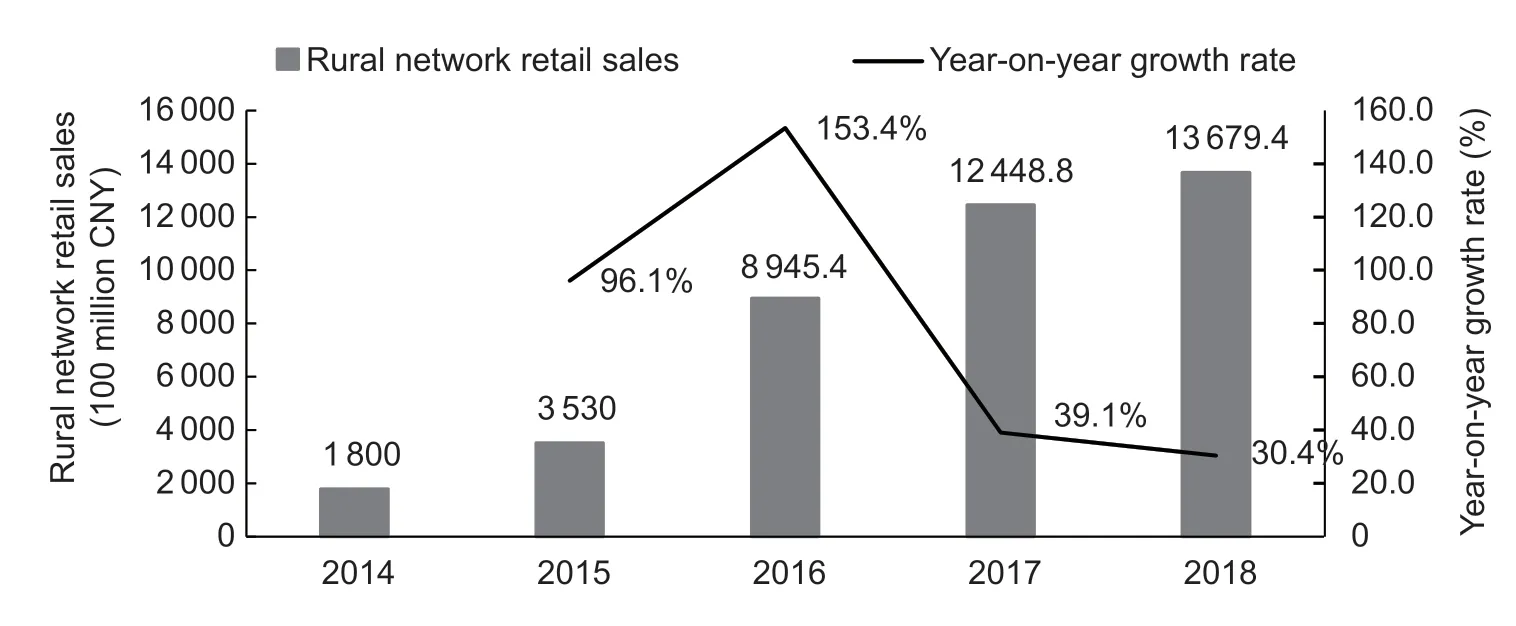
Fig.1 National rural online retail sale from 2014 to 2018. Source:Ministry of Commerce of China,2019.
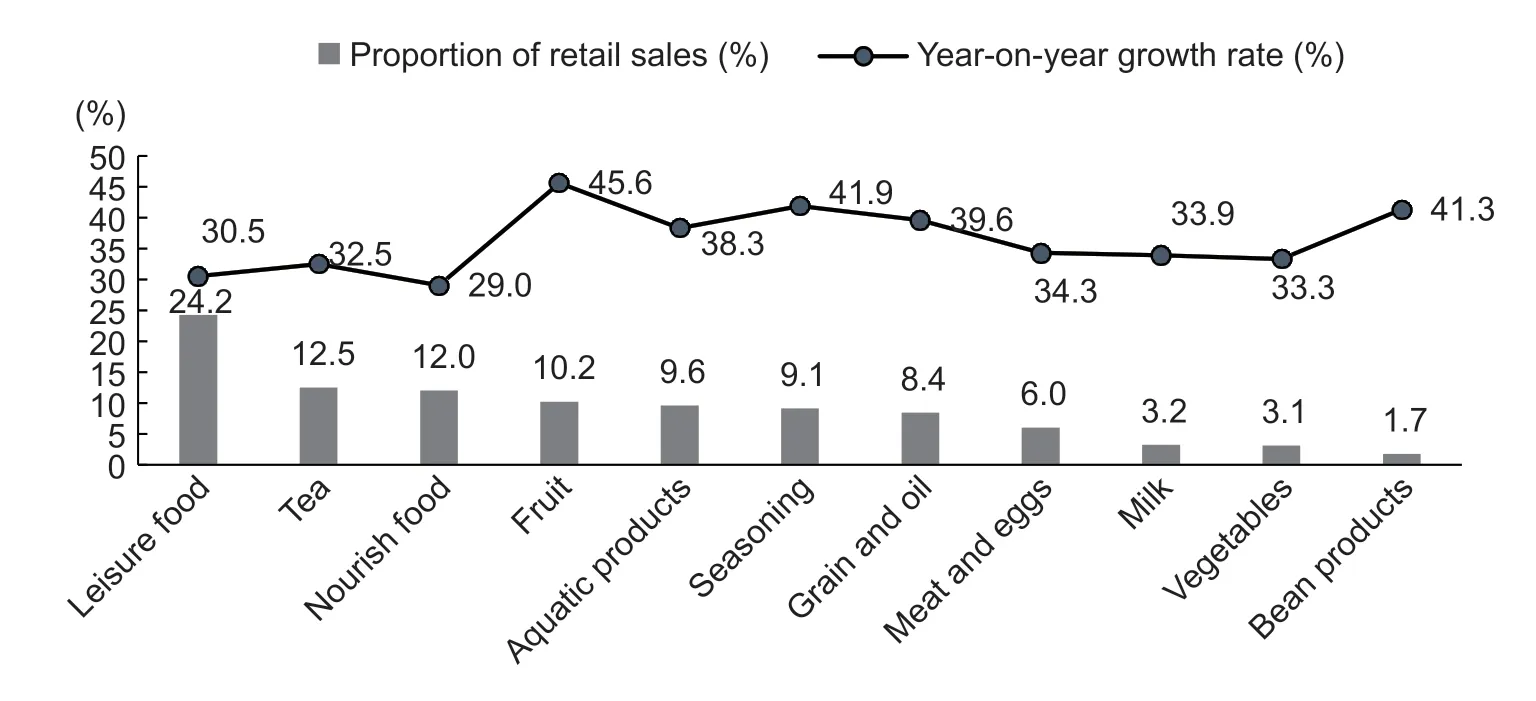
Fig.2 The proportion of retail sales and year-on-year growth rate of agricultural products in 2018. Source:Ministry of Commerce of China,2019.

Fig.3 The online retail from national poverty-stricken counties.Source:Ministry of Commerce of China,2019.
Over the past 40 years,China has made significant progress towards its poverty alleviation goals. Most rural households have gradually fought out of absolute poverty.Under the current poverty line,the rural poor population has decreased by 739.9 million (Liuet al.2019). The World Bank acknowledges that China has significantly progressed towards inclusive and sustainable development that alleviates poverty. An extensive review of China’s great achievements in anti-poverty was provided below.
Before 1978,the size of China’s poor population was about 250 million. The large scale of poverty was due to low rural productivity. With the reform of the basic household management system and the commodity circulation system in rural areas,rural productivity has been increasing considerably. Agricultural outputs and farmers’ income have rapidly increased. Accordingly,the size of rural poor population has greatly decreased. The remaining poor population usually geographically concentrate in the“old,small,border and poor” areas. In those areas,it is difficult for the poor to get out of poverty effectively without substantial economic growth. The Chinese government has started a series of large-scale organized rural povertyalleviation projects since 1986. These projects formulated a “county-level targeting” mechanism and established 331 major national aid-the-poor counties. After Comrade Deng Xiaoping’s speech on the Southern Patrol in 1992,China’s economy entered a new era of high-speed growth.Economic growth became the main driving force of poverty reduction in this stage of economic development. However,rapid economic growth inevitably brought about unbalanced regional development,and the poor population further congregated in the underdeveloped areas. In response,China began to implement the Seven-Year Priority Poverty Alleviation Program (1994–2000) in 1994,prioritizing the problems of food and clothing for the poor in underdeveloped areas. Six years after implementing the Program,China’s absolute poverty-stricken population dropped to 32 million.Despite these remarkable achievements,a new challenge has emerged:many of the remaining poor are distributed in sparse counties that are not supported by the previous anti-poverty programs.
In response to the new challenge,the government has issued the Outline for China’s Rural Poverty Alleviation and Development (2001–2010),which relaxed the restrictions on using poverty alleviation funds,extending to cover poor people not living in the national poverty-stricken counties. In 2011,the government issued the Outline for Developmentoriented Poverty Alleviation for China’s Rural Areas (2011–2020),which identified 11 consistently poor areas and three main battlegrounds for poverty alleviation,including Tibet,the Tibetan area in four provinces and southern Xinjiang.From 2014,the government started to identify the villages in poverty and integrate them into the unified management of the national poverty alleviation information network system.According to the poverty standard in 2010,the number of people in rural poverty decreased from 661.0 million in 1985 to 16.6 million in 2018,and the incidence of poverty decreased from 78.3 to 1.7%. China is on track to meet its goal of eradicating absolute poverty by the end of 2020.
During the new stage,e-commerce could contribute to poverty alleviation in three aspects. First,poverty alleviation through e-commerce has been ready in both infrastructure and business type,as e-commerce has developed rapidly in urban areas and extended to rural areas in some poverty regions. Second,e-commerce platforms can standardize the agricultural products from the specific poverty-stricken areas that are often unique and small in volume,and then transform them into hot sales. This helps to target poverty issues aggregated in some specific areas. Third,the new poverty-alleviation strategy seeks a transition from “blood transfusion” to “hematopoiesis”,underpinning by the philosophy of development-oriented poverty alleviation.In this regard,e-commerce is considered an innovative industry to promote hematopoiesis through building human capital and igniting people’s enthusiasm of anti-poverty.
2.3.E-commerce as anti-poverty toolkit
Chinese government’s policies have promoted rural e-commerce as an important means of targeted poverty alleviation. In recent years,the rural industrial value chain has been promoted by rural e-commerce. E-commerce is an optimal channel for the circulation of rural commodity.As mentioned above,rural e-commerce also provides a new form of employment for rural people. According to various policy documents,the key areas supported by e-commerce poverty alleviation are poor counties. Since the Ministry of Finance and the Ministry of Commerce jointly launched the NRECDP in 2014,875 state-level poor counties have been successively listed as NRECDP member counties. By 2019,the NRECDP will achieve a coverage of all state-level poor counties.
Early focus of the NRECDP was agricultural product sales. It did not explicitly refer to e-commerce poverty alleviation. But the project in the pilot stage led to the local e-commerce infrastructure construction and service improvement. In the NRECDP counties,a group of rural e-commerce leaders have been trained. In 2016,the State Council Leading Group Office of Poverty Alleviation and Development,the Ministry of Finance,the Ministry of Commerce,and other ministries jointly issued an act on the NRECDP,in which the proportion of national poverty-stricken counties must not be less than 50% of the enrolled counties.Table 1 reports the integrated demonstration project on e-commerce in rural areas from 2014 to 2019. The funding on rural e-commerce has continued to increase since 2017.In 2017,the No.1 Central Document set up a special request for local governments on “promoting the development of rural e-commerce”,which encouraged the development of e-commerce industry parks in local communities.
According to the documents issued by the Ministry of Finance,the Ministry of Commerce,and the Poverty Alleviation Office of the State Council in 2018,the focus of the NRECDP is to strengthen the ability to establish e-commerce for poverty-stricken villages and households in rural areas. Especially,the deeply poverty-stricken areas will be supported by transferring payment from the central government. Other specific measures include expanding the marketing channels of rural products,encouraging more rural residents to participate in rural e-commerce,and facilitating poor villages in taking advantage of their resource endowment potential. One of the measurable objectives of the NRECDP is that the absolute povertystricken villages’ e-commerce service coverage rate reaches 50%. The overall administrative villages are also required to achieve this goal. Every county involved in the NRECDP would receive 20 million CNY from the Ministry of Finance. The transfer payment should be invested in specific projects that promote rural e-commerce,including promoting rural product marketing,improving rural public service system,and training rural e-business personnel.To introduce rural products to urban areas,the NRECDP supports the production,grading,packaging and marketing of rural products. The NRECDP supports the construction of e-commerce public service centers and sites. Agglomeration effect may be achieved by concentrating logistics,training and poverty alleviation means in rural areas. With the support from the NRECDP,farmers who have the intention to engage in e-commerce would be trained.
A text analysis of government documents summarize the following ways in which e-commerce contributes topoverty alleviation. First,e-commerce is an effective antipoverty toolkit. This is because e-commerce overcomes the geographical constraints encountered in the uplink of traditional agricultural products and promotes the production and marketing of rural products in poor areas.The government is also increasingly paying attention to the role of e-commerce as a new toolkit in public services such as rural education and medical care. It is predicted that e-commerce poverty alleviation will shift from commodity circulation to social and livelihood services. Moreover,e-commerce poverty alleviation is regarded as an essential part of the country’s “Internet Plus” action. China’s “Internet Plus” operation has already achieved world-renowned achievement in urban areas. E-commerce empowerment is equally important to rural people,especially those in poverty. The e-commerce poverty alleviation policy is oriented towards “paving the way for rural poor to share the “digital dividend” and living convenience brought by the Internet”. Last but not the least,e-commerce poverty alleviation is a part of agricultural and rural modernization.An important aspect of the e-commerce poverty alleviation policy is extending the information infrastructure to the vast rural areas,which will help lay out the foundation and application of modern information technology all over China.

Table 1 E-commerce into rural comprehensive demonstration counties from 2014 to 2019
3.Data and methods
3.1.Data
Our dataset is derived from NFRS conducted by the Ministry of Agriculture and Rural Affairs of China in 2018. NFRS has been carried out annually since 1986. It covers 31 provinces,municipalities and autonomous regions of Mainland China.In the beginning,stratified sampling was used to select villages in each province based on their topography,economic development,agricultural type (agricultural area,forest area,and pastoral area),and geographic location. As time passed by,some villages left the survey,because they either became urban areas or their village commissions did not support the survey. When a village exited,another village with similar characteristics in the same county would be the replacement. Households were randomly selected within villages. Besides its household-level dataset,NFRS has accumulated a village-level dataset on production practices,economics of household businesses and industries in rural areas. In 2018,NFRS launched a new survey that added a wide range of new variables. Especially,the village-level variables have been transformed and updated according to the latest development in rural China in recent years. As a result,new variables related to e-commerce have been included in the new survey. However,although NFRS is a longitudinal survey,the new survey in 2018 only provided cross-sectional information as of 2018,covering 371 villages nationwide. Sample distribution by province and time of participation in the NRECDP are shown in Table 2.
3.2.Key variables
The dependent variable of this study is per capita disposable income at the village level and the key independent variable is the implementation time of the NRECDP in the village.Definition of all the variables and descriptive statistics are shown in Table 3.
The effect of the NRECDP on income may be lagged and carried out well into the future. For example,the villages may show a more obvious income increase in the second or third year of participation,and the trend may continue or reverse in the following years. So,the variable “NRECDP_time” is defined as a dummy variable,with one referring to that a village has participated in the NRECDP for one year and zero otherwise. The disposable income per capita in the villages that were involved in the NRECDP is higher than that of the non-participating villages. The population in labor force accounted for approximately 59% of the total sample. Over 20% of the labor force had at least 9 years of schooling or received professional skills training. Labor burden coefficient refers to the ratio of the non-workingage populations to the working-age populations. Our data shows that,on average,the labor burden ratio is 1.22. The mean household cultivated land was 2.82 mu (equivalent to 0.18 ha). The average agricultural subsidy per mu is 140 CNY.In our sample,about 19% of the villages were close to the urban suburbs. The average distance from the villages to the nearest city’s downtown was 1.82 km. The average hardened road ratio was 84%,and less than 50% of villages had cold storages.
For participation in e-commerce,we find a U-shape trend with respect to the NRECDP duration. In the first year of participating in the NRECDP,the average number of labor engaged in e-commerce were 14.89 per village. In the second year,the number decreased to 7.30.5Labor engaged in e-commerce mainly refers to those who acquire income through e-commerce. The income should accounted for 10% or more of total household business income.“Down in the dumps” emerged in the third year,with only 3.32 labors involved,even less than the number in the non-NRECDP villages. Bouncing back from the bottom,the number of e-commerce labor increased to 9.26 in the fourth year and 9.96 in the fifth year. By examining the change in the villagelevel income,it appears that e-commerce increases farmers’income (Table 4),although in the first year of the NRECDP participation,the NRECDP villages had lower income than non-NRECDP villages.
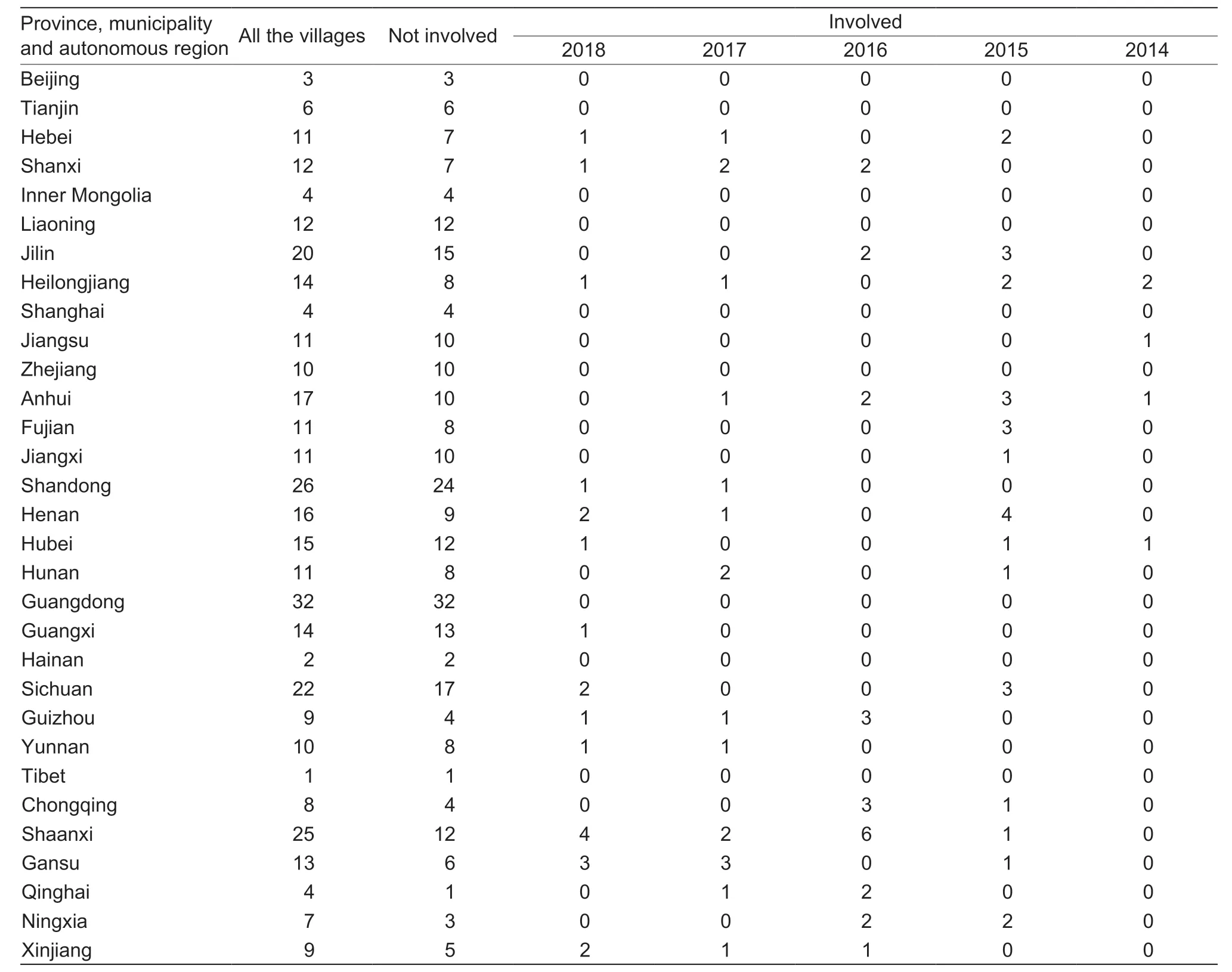
Table 2 The year of villages’ involvement in the National Rural E-commerce Comprehensive Demonstration Project (NRECDP)
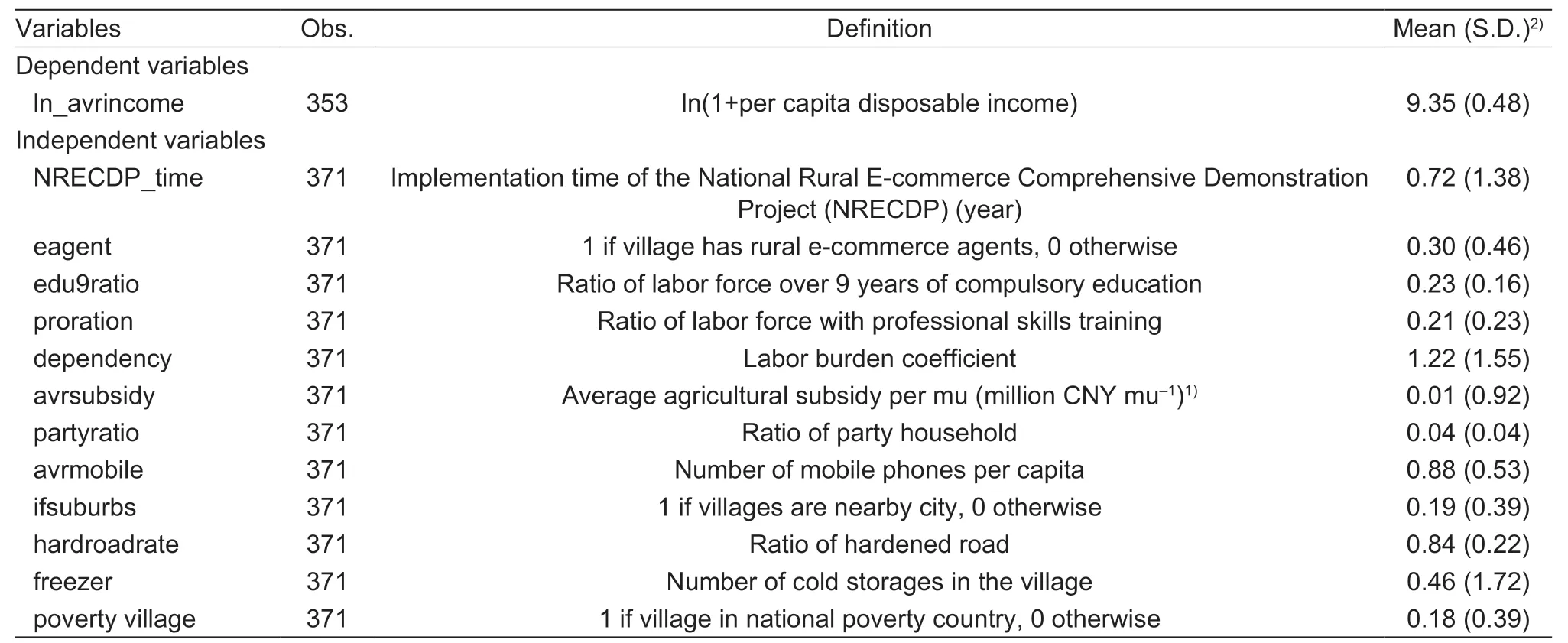
Table 3 Definition and descriptive statistics
Summary statistics for disposable income per capita by different groups are shown in Table 5. We take the World Bank’s standard as a reference to define the “relative poverty villages”. According to the World Bank’s standard,living on less than 3.2 USD and 5.5 USD per capita per day reflects poverty lines in low and middle-income countries and high-income countries,respectively. The current poverty standard in China is between 3.2 USD and 5.5 USD per capita per day,so this paper defines relative poverty line as the daily cost of living being less than 5.50 USD.
According to Table 5,rural e-commerce could play a more important role in the relative poverty villages than in those not in poverty. This offers a clue that the “NRECDP may be more effective in relative poverty villages. The survey showed that the per capita disposable income (PCDI in the table) of the rural e-commerce experiment villages was higher than that of non-experiments villages. The per capita disposable income of the NRECDP villages and the non-NRECDP villages were 10 043.97 and 13 708.83 CNY,respectively. The per capita disposable income for the NRECDP villages in relative poverty was 8 773.34 CNY,and that of the non-NRECDP villages in relative poverty was 9 161.74 CNY.
3.3.Methods
E-commerce,theoretically and empirically,has been taken as a positive driver of income. This paper adopts the time when the villages were involved in the NRECDP,rather than the experience about rural e-commerce,as the key independent variable. Many factors affect household income,including the characteristics of rural household,land resources,and the economic development of their villages. To identify the impact of rural e-commerce on household income while controlling other factors,we used an ordinary least square (OLS) regression approach to estimate eq.(1) directly. The variable “avrincome” is the per capita disposable income in the village;NRECDP_timerepresents the time when villages were involved in the NRECDP; eagent represents the emerging of e-commerce agents in the village. AndX1is a vector of exogenous variables that might influence the outcome variable. Among them,edu9ratio,prorationandpartyratiorepresent the village’s human capital characteristics; the variable “dependcy” represents the old-age dependency ratio; the variable “avrsubsidy”represents the amount of agricultural subsidies; “ifsubsurbs”,“hardroadrate” and “freezer” represent the location and public facilities of the villages.αandβare parameters to be estimated; andεis an error term.

However,our data shows that only 96 out of the 238 sample villages involved in the NRECDP. This data structure may lead to serious sample selection errors,resulting in the endogeneity of the regression model not being controlled.We then used the Heckit method to address the sample selection issue (Heckman 1979; Heckman and Robb 1985;Semykina and Wooldridge 2010). Given the NFRS sample villages are considered as typical villages of each county,itis believed that these villages could represent their counties’ordinary characteristics. We therefore divide the effect of rural e-commerce on household income into two continuous stages. First,using all the observations to predict the probability of one village receiving the intervention (namely,the NRECDP),and calculate the reverse mills ratio of each observation. And second,using the samples involved in the intervention to carry out the second stage regression analysis,while taking the reverse mills ratio as an additional control variable to obtain consistent estimates (Chen 2012).Consequently,there are two equations:the first stage selection equation and the second stage main regression equation. In the selection equation,the NRECDP village,a dummy variable,is the dependent variable. We use a Probit model to estimate the selection equation.

Table 4 Labor engaged in e-commerce

In eq.(2),prob(eprogram=1) is the probability of villages being selected into the NRECDP,andX2indicates the factors influencing the village to be selected. However,in order to address the sample selection issue,there should be at least one explanatory variable that satisfies the exclusive conditions. This variable should be correlated with the NRECDP,but should not be directly correlated with per capita disposable income. In our paper,the number of mobile phones per capita (avrmobile) and whether a village belongs to a national poverty county (povertyvillage) are regarded as the exclusive explanatory variables in the selection equation.X2includesavrmobileandpoverty villagein addition to the variables inX1. According to eq.(2),we can change eq.(1) into eq.(3):

Among them,ln_avrincomerepresents the logarithm of the per capita disposable income of a rural household,NRECDP_timerepresents the implementation time of the NRECDP in villages,X1is a vector of corresponding control variables,f(d´X2)/F(d´X2)is the correction term,θis the constant term,andμis an error term. In this paper,we use eqs.(1),(2),and (3) to test the income increasing effect and poverty reduction effect of rural e-commerce.
4.Results and discussion
4.1.Empirical results
We firstly present the determinants of rural e-commerce participation from a probit model. In step 2,we present the basic model of the effects of rural e-commerce on per capita disposable income based on eq.(3).
Table 6 shows the results of the estimation for eq.(3),representing the effect of rural e-commerce on the PCDI for all villages. The result shows that the inverse mills ratio(IMR) is significantly positive,which means the selective bias is not allowed to be ignored. The endogeneity problems should be controlled for by the Heckman two-step method.It is thus more suitable to use the Heckman approach to test the effect of rural e-commerce on income and poverty reduction. Columns (1) and (3) report the selection equation regression results for the full sample and relative-poverty villages. Columns (2) and (4) report the Heckman outcome equation regression results for the full sample and relativepoverty villages. There is a significant positive correlation between the duration of the NRECDP involvement and the per capita disposable income. Along with the progress of the NRECDP,the income effect of rural e-commerce is increasingly significant. We also examine the role of rural e-commerce agents in the village. While it is not statistically significant at the level of 10%,the coefficient is positive. In theory,rural e-commerce agents may play a positive role in promoting ordinary farmers’ income. However,it could be the case that rural e-commerce agents actually increase their own income by rural e-commerce,rather than income of the rural households.
The regression results of other control variables generally are consistent with common sense and economic intuition. It finds that skill training is positively correlated with PCDI,which is consistent with the findings of Wan and Zhou (2005) and Knightet al.(2010). The variable representing ratio of party members is positive and statistically significant. This suggests that the identity of party members is an important social capital. Villages close to urban suburbs appear to have higher per capita disposable income,which is in line with Maet al.(2020).However,the variables “edu9ratio” and “eagent” are not statistically significant. “Nine-year compulsory education”,to some extent,reflects the general quality of labor force.The villages with more high-quality laborers are supposed to be richer. E-commerce agents can be approximately regarded as an intermediary and therefore villages with more e-commerce agents have a higher probability of developing e-commerce.
In the selection equation,the ratio of nine-year compulsory education and the proportion of labor force are negatively and significantly correlated with the choice of experiment villages. However,being a national poverty village is positively and significantly correlated with the choice of experiment villages. This result suggests that poor areas tend to be involved in the NRECDP. This is consistent with the aim of government policies.
Column (2) of Table 6 reports our preferred specification,including the regression results of the relative poverty sample. The point estimate from panel A indicates that thefirst year of involvement in the NRECDP is positive and statistically significant. The following second to fourth year show the same results. The coefficient of the fifth year is positive but not statistically significant. As the NRECDP progresses,the income effect of rural e-commerce shows a trend of increasing initially and then declining.
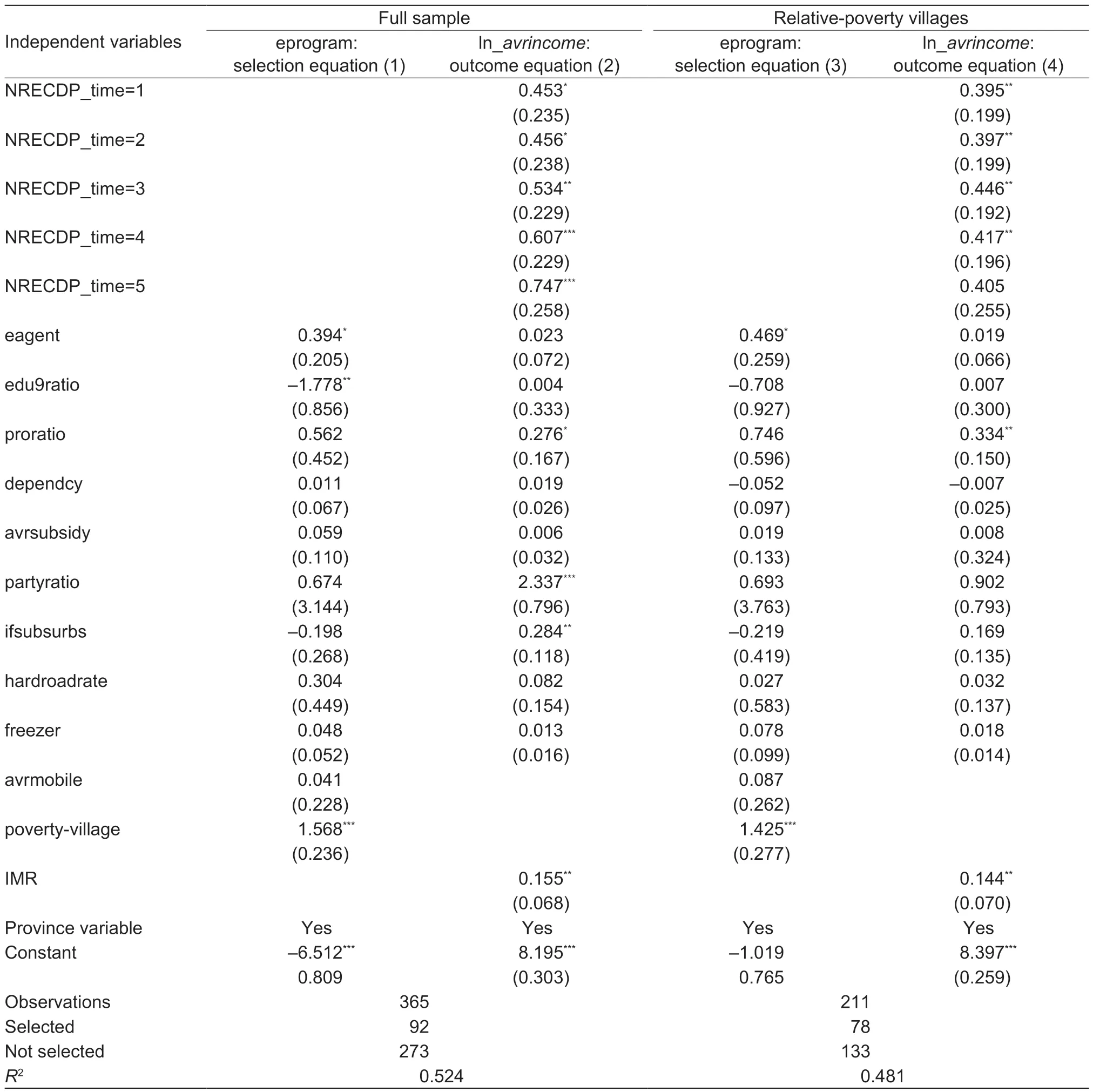
Table 6 Empirical result of benchmark regression
To summarize,the NRECDP’s effect on farmers’ income in the relative poverty villages is inverted U-shaped. In the first three years,the positive income effect increased year by year. In the next two years,the effect declined,though it was still positive. The regression results of other control variables are similar to those examined in the full sample.
4.2.Sensitivity analysis
In observational studies or quasi-natural experimental studies,missing variable bias is usually the key factor affecting the robustness of causal inference. We have controlled some variables in the benchmark regression.However,as long as the missing variables are correlated with the explanatory variables or the explained variables appear in the unobservable confounding variables,the validity of the benchmark regression results would be doubtful. Therefore,referring to the research ideas of Frank(2000),we analyzed the sensitivity of the estimated results of the previous regression by using the bias percentage. By so doing,we further ensure the robustness of the empirical results. Bias percentage is defined as the proportion of observable samples replaced. Bias percentage makes the inference invalid,i.e.,the minimum bias degree that can change the conclusion of causal inference. So we can effectively address the problem of missing variables caused by unobservable factors.
Table 7 represents the results of sensitivity analysis for variables that passed the significance test in the previous regression. The bias percentage of the core explanatory variable,NRECDP_time,is 64.95%. It means that the regression result ofNRECDP_timeon per capita disposable income in the village will be changed when the bias of the unobservable missing variable reaches 64.95%. Among the three significant control variables,partyratiohas the lowest missing variable bias (40.74%),ifsubsurbshas the highest missing variable bias (84.74%),and the average deviation percentage of the control variables is 60.64%.The result shows significant robustness.
4.3.Robustness test
To further examine the impact of rural e-commerce on farmer’s income,we conducted a propensity score matching(PSM) model as a robustness check (Ogutuet al.2014;Qin and Chong 2018). PSM estimation results are shown in Table 8. Based on the observed characteristics,PSM makes it possible to match villages with e-commerce income and those without. In the PSM estimation framework,the selection equation can be estimated by adopting a binary choice model (a logit model in this study). By doing so,propensity scores for villages could be generated in the sample. According to the distance defined by propensity scores,the PSM approach matches the villages participating in the NRECDP and those not. The potential selectivity effects arising from observable factors could be alleviated.The kernel-based matching technique is adopted to show that none of the mean differences of the selected variables between the NRECDP-villages and non-NRECDP villages isstatistically significant,even at the 10% level of significance.The findings suggest that the covariates’ balancing property was satisfied (Ananget al.2017; Maet al.2020).
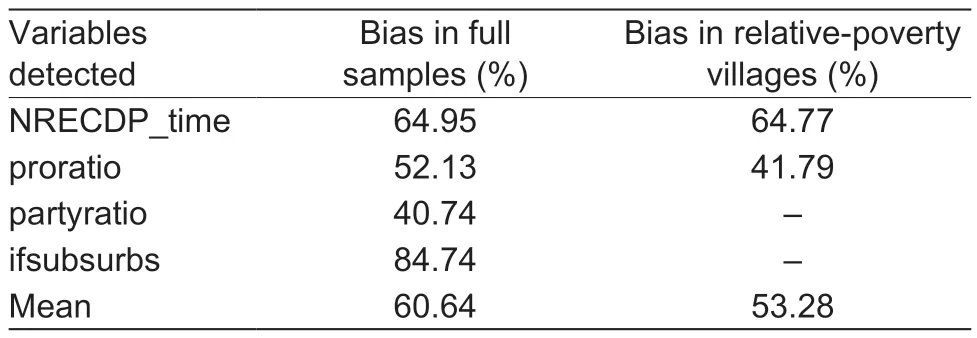
Table 7 Empirical result of sensitivity analysis
Table 8 presents the results based on the kernel-based matching technique. The effect of rural e-commerce on the household income of all villages is shown in column (2).The results show that the coefficient of involvement in the NRECDP is positive and statistically significant. It means that e-commerce has a significantly positive effect on the rural households’ income. Column (4) shows the result for the relative poverty villages. After rematching samples,the impact of rural e-commerce on personal income also shows a U-shaped pattern. Combined with the regression results of different samples,it can be concluded that rural e-commerce has a significant and positive impact on income and reducing poverty. However,the effect appeared to be heterogeneous among villages. For the relative poverty villages,the impact of rural e-commerce on personal income shows an inverted U-shaped pattern. With the continuous progress of the NRECDP,the marginal effect of rural e-commerce on income tends to become stable gradually.
As shown in Tables 6 and 8,household income could be improved by rural e-commerce significantly. Rural e-commerce could play a more statistically significant role in enhancing income. The ideal model of poverty alleviation is to enhance the ability of self-development of low-income groups. Generally,villagers who would like to engage in e-commerce need to go through vocational training.
Rural households’ lack of skills is the main reason affecting their participation in e-commerce. According to a specific survey of 9 553 rural households nationwide by the NFRS in 2016,the proportion of farmers who had a strong willingness (very or relatively strong) to engage in e-commerce was only 8.2%. It is not hard to imagine that the proportion of those who actually engaged in e-commerce would be even less. The third national agricultural census offers a similar finding. In 2016,the proportion of largescale agricultural business households and agricultural business units engaging in agricultural e-commerce was 1.6%,of which 1.1% were large-scale agricultural business households NFRS in 2016 showed that the proportion of households that were unable to engage in e-commerce was as high as 49.1%. As mentioned above,e-commerce may be a digital divide for rural people.
Overall,we tried to examine the poverty alleviation effect of e-commerce in this paper. As a beginning study on e-commerce demonstration policies,this paper revealed that e-commerce could help poor people to get rid of poverty.The NRECDP was considered as a quasi-experiment.Because the mechanism variables under the NRECDP were unavailable,the mechanism through which e-commercecontributed to poverty alleviation had not been examined in depth.
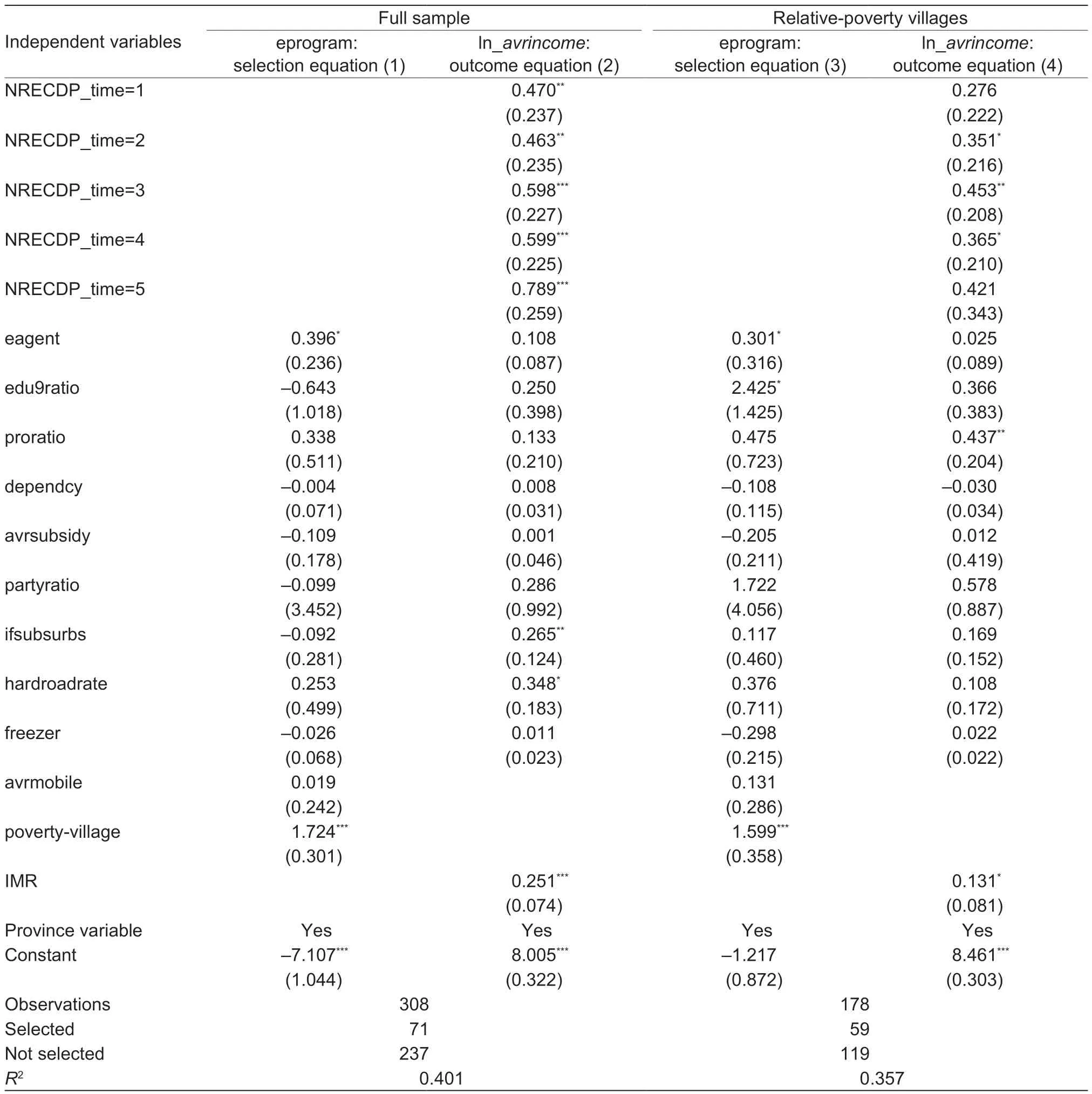
Table 8 Empirical result based on propensity score matching model
5.Conclusion and policy recommendations
Studies that investigate the wider poverty-reduction effects through e-commerce are relatively small in quantity. This paper fills this literature gap by examining the effect of rural e-commerce on farmers’ income. We drew upon crosssectional analysis by using village-level data collected from 31 provinces,municipalities and autonomous regions in China. The Heckit model was employed to address the potential selectivity bias from both observed and unobserved factors. The PSM approach was adopted to test the robustness of empirical findings. To the best of our knowledge,our study is innovative and comprehensive and the first one that identifies a statistical association between rural e-commerce and household income based on villagelevel data. Our findings indicate that rural e-commerce has a significantly positive effect on personal income.Moreover,this effect in the relative poverty villages is inverted U-shaped. The robustness of the findings was confirmed by the estimation results of the PSM models.
We concluded that rural e-commerce could actually promote rural income and enhance rural development.The ideal model for poverty alleviation is to enhance the capacity of low-income groups so that they can continue the development path independently. E-commerce empowers some poor people,especially through skill training programs usually provided by the government’s e-commerce projects.Our field survey found that professional skills training for e-commerce contributes to increasing income. E-commerce could be combined with other poverty alleviation approaches and intellectual support. E-commerce poverty alleviation would allow poor people to obtain informationviainternet,which enables poor households to “open their vision”and “accept more insight”. This kind of “vision” and“insight” directly determines poor people’s initiative to get rid of poverty. The introduction of e-commerce to rural areas allows some poor people to actively integrate into modern society and share the benefits of modernization.E-commerce also can efficiently spread anti-poverty stories through the internet,which could create a social atmosphere of caring for poor areas.
The policy implication of our paper is significant. First,investment in e-commerce in recent years is critical in increasing income and alleviating poverty. The policy designs should seek to improve poor areas’ access to hard(internet) and soft (education) infrastructure. In the future,the main direction of poverty alleviation through e-commerce is to introduce digital technology and business forms into poor areas. Combined with the introduction of e-commerce into rural production and management,the digitizing of all kinds of business entities should be accelerated. On the platform of e-commerce,human resources can be improved to achieve the revitalization of rural talents. In the poverty areas,construction of information infrastructure should be implemented. Network speed-up and fee reduction projects should be adjusted to better serve the poverty areas. 5G network deployment should be ahead of schedule in rural areas. More e-commerce outlets should be constructed in poverty-stricken areas. Those outlets should integrate various types of social capital resources such as e-commerce,express,logistics,commerce,and finance,etc.Successful and inspirational stories of poverty alleviation in rural areas could be promoted on the internet. Regional brands’ development strategy could specifically focus on the utilization of e-commerce. To summarize,only if the digital divide were bridged,rural income would increase through the “digital dividend”.
Acknowledgements
The authors gratefully acknowledge the financial support from the National Natural Science Foundation of China(71673274); the Outstanding Innovative Talents Cultivation Funded Programs 2019 of Renmin University of China.
Declaration of competing interest
The authors declare that they have no conflict of interest.
杂志排行
Journal of Integrative Agriculture的其它文章
- Paths out of poverty:lnternational experience
- Paths out of poverty:An eclectic and idiosyncratic review of analytical approaches
- Elite capture,the “follow-up checks” policy,and the targeted poverty alleviation program:Evidence from rural western China
- Income effects of poverty alleviation relocation program on rural farmers in China
- Do rural highways narrow Chinese farmers’ income gap among provinces?
- Does poverty-alleviation-based industry development improve farmers’ livelihood capital?
